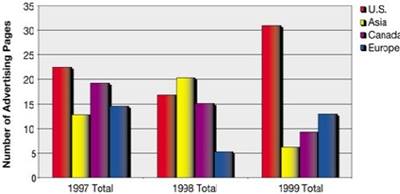A Strategy for Growth
After trying these tactics out for itself - with profitable results - a supplier now offers moldmakers tips on how to improve sales and profits by developing a comprehensive growth strategy.
Share
Read Next
"We're making money, but we're not growing." Many small and mid-sized U.S. manufacturing companies probably could make this statement today. With technological changes favoring large manufacturers and foreign competition offering additional pressure, the smaller manufacturer is finding it increasingly difficult to increase sales and profits.
Imagine this: you have built your business from the ground up and, after experiencing the initial growing pains of any business just starting out, you benefited from a steady growth for several years. However, after about 10 years, that steady growth has leveled off due to new challenges facing the industry from both new technology and foreign influences. What are your options?
According to one company that has faced the challenge and survived, developing a comprehensive strategy for growth is the key to restarting that steady rate of sales and profits increases. In fact, by stepping back and taking a closer look at its company, a moldmaker - or any other manufacturer, for that matter - may find that by simply rethinking its concepts of marketing, manpower and machinery, it can put together a strategy for growth to take its sales to new heights.
Marketing
If marketing isn't your strong point, it may pay to hire a marketing specialist to help determine the role marketing should play in your strategic planning for growth. Should you decide that marketing must be prominent in establishing "the game plan" for directing the company's efforts in increasing sales and profits, this specialist can develop a "marketing plan" by working through the "marketing plan process." This process is crucial to the strategy for growth because it provides major input for decisions concerning the two other components - manpower and machinery.
Some steps that may be included in the process are an audit of the company's strengths and weaknesses, market potential analyses, strategy formulation and the creation of a marketing plan budget and calendar. The process should also provide for a semi-annual and annual review of the results achieved by the execution of the implemented marketing tactics. In effect, your marketing plan process should be "dynamic," allowing for adjustments in tactics as called for from the reviews.
One tactic that you may address is rethinking your logo. Is it really doing justice to your company? A modification may be needed to promote greater name recognition and to emphasize your image. For example, to enhance its image of "precision," one manufacturer not only enlarged its name, but also chose a font that had sharper lines.
Another tactic in your growth strategy may be "market development" as a means to raise revenues. This can be defined as a growth strategy in which a company increases its sales by going after new customers located in new market areas with the same products sold to current customers. Extensive telemarketing to qualify prospects in potentially strong market areas is a good method of finding those customers. This phoning tactic can be greatly aided by the use of an Internet search engine with particular key words. Once large pockets of solid prospects are located, schedule personal sales trips consisting of two-man sales teams from the managerial ranks to follow up on the new leads.
Manpower
Skilled workers are always a valuable commodity to any precision manufacturing company, and are usually in short supply. To maintain a strategy for growth, you may need to increase your pool of skilled machinists and to provide resources for their continual skill upgrade. Take the time to look at your shop and determine what skilled personnel you need to complement increased forecasted sales derived from the growth strategy. Set your goal to hire those people in a certain timeframe. For example, if your forecasted sales indicate that you will need five new machinists to achieve your set goals, aggressively recruit skilled workers capable of operating both present as well as yet-to-be-delivered machinery.
To regularly raise the skill level of both shop and office personnel, look around your area to find instructional courses and seminars for all employees to keep up-to-date with their respective machine hardware and computer software. A close relationship with your trade associations may offer opportunities for additional courses and lectures. (*For a list of trade associations and their contact information, visit the links page.) If you are buying new machines, ask the manufacturers of such new capital equipment to provide specific instruction. Some companies will bring one or two of your people to their location for lectures and hands-on instruction to make sure that they are "ready to go" when the equipment arrives in your shop. For the strategy of growth to be successful, an educated workforce is mandatory.
Machinery
Once your marketing program is capturing new customers for the company and the increased manpower has developed the expertise necessary to meet the additional mold building demands, look around your shop to see if you need to provide your skilled machinists with the latest machinery, so all of your customers can receive their products when needed. Using the sales forecast derived from the marketing plan as a guideline for your planning, decide what new machines are needed and what old machines can be sold off. (*For more information on how to choose the right machine, see Working on My Business, MoldMaking Technology magazine, September 2000.)
If properly thought out, the addition of this capital equipment may help you not only to serve more customers, but also to reduce leadtimes - increasing sales and profits.
Results
After a year it is time to sit back and review your strategy. Have your sales increased? Have your profits gone up? If so, how do these results compare with the previous year?
After utilizing this strategy, one manufacturer reported for the calendar year 1999 a sales increase of 28 percent, and an increase of 143 percent in profits from the previous year. What made these numbers more dramatic was that several of its major customers in 1999 showed negative sales growth, which caused the company to receive less business from them for the year. Consequently, aggressively going after new accounts reaped large gains for the company.
Should you continue to use market development and go after new customers offering the same product? Or should you start to think about altering your strategy and develop new product offerings (product development) with your expanded production capacity? For this manufacturer, the right path is to maintain its current strategy for growth for the next few years, as long as there is still market potential to be tapped in the U.S. and beyond. While this particular strategy may not work for every company, moldmakers can be assured that developing - and following - a comprehensive growth strategy will inevitably lead to increased sales and profits.
Related Content
The Role of Social Media in Manufacturing
Charles Daniels CFO of Wepco Plastics shares insights on the role of social media in manufacturing, how to improve the “business” side of a small mold shop and continually developing culture.
Read MoreMMT Chats: Mold Builder Shares “Raw and Real” Social Media Strategy
MoldMaking Technology Editorial Director Christina Fuges sits down with Murphy Forsyth, GM – Injection Molding and Director Of Marketing for Zero Tolerance LLC in Clinton Township, MI.
Read MoreMMT Chats: Simple Steps to Get Your Social Media Campaign Started
MoldMaking Technology Editorial Director Christina Fuges catches up with Gail Now’s Chief Curiosity Officer Gail Robertson. We talk about the importance of using the curiosity tool to tell your stories as part of a marketing strategy that includes social media. This episode is brought to you by ISCAR with New Ideas for Machining Intelligently.
Read MoreEditorial Guidelines: Editorial Advisory Board
The Editorial Advisory Board of MoldMaking Technology is made up of authorities with expertise within their respective business, industry, technology and profession. Their role is to advise on timely issues, trends, advances in the field, offer editorial thought and direction, review and comment on specific articles and generally act as a sounding board and a conscience for the publication.
Read MoreRead Next
Growth Strategies for the U.S. Moldmaker - Understanding Your Competition - Here and Abroad
This article begins a four part series that will describe the current competitive conditions in the plastics tooling industry and what some companies are doing to grow their businesses amidst challenging conditions.
Read MoreAre You a Moldmaker Considering 3D Printing? Consider the 3D Printing Workshop at NPE2024
Presentations will cover 3D printing for mold tooling, material innovation, product development, bridge production and full-scale, high-volume additive manufacturing.
Read MoreHow to Use Strategic Planning Tools, Data to Manage the Human Side of Business
Q&A with Marion Wells, MMT EAB member and founder of Human Asset Management.
Read More



















